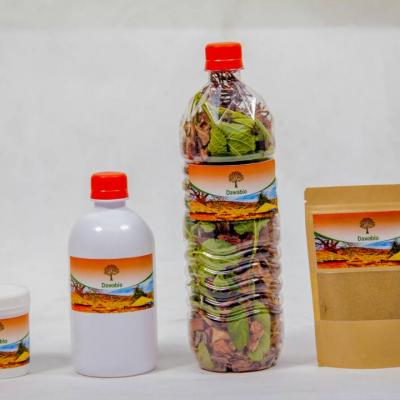The causes of varicocele and herbal remedies
Varicocele is an abnormally enlarged venous condition along the spermatic cord in the male testes or testicles. This is similar to varicose veins in the legs when the blood vessels swell due to the accumulation of blood, the difference is that it occurs in the male testes.
The use of natural plants makes it possible to cure varicocele permanently by avoiding the surgical operation. The natural remedy for curing varicocele that we offer is completely herbal. It contains 2 elements namely: a herbal tea and an ointment. Trust us ! Because it is the secret to cure varicocele without operation thanks to the plants. Click on the image below to discover this natural treatment
The causes
Varicocele is most often caused by an obstruction to blood flow in the left renal vein. The pressure in the vein then increases and the venous valves of the spermatic cord are weakened. The increased pressure causes dilations in the venous plexus.
Primary varicocele:
The causes are of hereditary origin.
Secondary or symptomatic varicocele:
Narrowing of the renal veins by the aorta and one of its branches
Folds of the spermatic cord veins
Blockage caused by a kidney tumor that puts pressure on the testicular vein
Vascular ruptures or blood clots
Your spermatic cord carries blood to and from your testicles. It is not known exactly what causes varicoceles.
However, many experts believe that a varicocele forms when the valves inside the veins in the cord prevent your blood from flowing properly. The resulting backup causes enlargement (dilation) of the veins. This could damage the testicle and lead to deterioration of fertility.
Varicoceles often form during puberty. Varicoceles usually occur on the left side, possibly due to the position of the left testicular vein.
Risk factors
There do not appear to be any significant risk factors for developing a varicocele.
Prevalence
With 20% of the adult male population affected, varicocele is a relatively common condition that can occur at any age.
Evolution and possible complications
Varicocele has no effect on erectile function and sexuality, and in some men it does not cause discomfort or complications.
When it is large in size, it can cause a feeling of heaviness, or even pain, which may worsen over time. It can also affect the development and function of the testis with testicular atrophy and, presumably, fertility problems. The figures do indeed suggest an impact of varicocele on fertility: 35% of men affected by primary infertility have a varicocele., 80% when it comes to secondary infertility, compared to only 15% in the general population. However, the link between varicocele and infertility has not been confirmed and the possible mechanisms involved have not been elucidated. Several hypotheses are however put forward: varicose veins could cause, by blood stagnation, a warming of the testicle harmful to spermatogenesis. Poor venous return could also cause stagnation of toxic substances, such as tobacco, in the bloodstream, with an impact on spermatogenesis. The reflux of adrenal and renal metabolites could also interfere with sperm production.
Some herbal remedies for varicoceles
Horse chestnut ( Aesculus hippocastanum )
The horse chestnut , fruit of the horse chestnut (Aesculus hippocastanum), should not be confused with the edible brown or chestnut, fruit of chestnut (Castanea sativa). It is found in the form of tincture and tablets.
The plant decreases the permeability of blood vessels. It prevents the serum from escaping the inflamed veins to collect in the tissues. In other words, it is anti-edematous, reducing the feeling of heavy legs.
The plant is anti-inflammatory. As we mentioned earlier, the veins lose their integrity and their tissue deteriorates. This causes sometimes exaggerated inflammation, with migration of white blood cells to repair the area. Horse chestnut will slow the production of inflammatory mediators, and will decrease the number, activation and adhesion of white blood cells, thereby calming the inflammation that varicocele can cause .
Finally, it is venotonic. It restores tone to damaged and flaccid venous tissue by exerting a contractile effect on the tissues, thus increasing venous pressure and allowing blood to flow better back to the heart.
A study published in the prestigious journal The Lancet concludes that a treatment with horse chestnut is as effective as wearing compression stockings. And much easier to set up in summer, you will agree.
Butcher's Broom (Ruscus aculeatus)
You may have encountered the butcher's broom during your outings in the forest. If you go looking for trouble you'll find it. This "little holly" should not be confused with holly (Ilex aquifolium). It is the long and fleshy roots that are used in pharmaceutical preparations.
The plant is found in the form of alcoholic extract or tablet. Butcher's broom has properties similar to horse chestnut. It is in particular venotonic and anti-edematous.
It is a plant that can either replace horse chestnut, or combine with it, in order to play on possible synergies in the treatment of varicocele
Witch hazel ( Hamamelis virginiana )
Witch hazel is no longer in fashion according to the lack of recent scientific studies on it. We have to go back to the years 1950 to 1970 to extract the interesting data. It is rich in tannins (10) and proanthocyanidins (11), two substances explaining its venotonic action
Take 30 to 60 drops (7) of the tincture 2-3 times a day. Since it is very astringent on the intestinal mucous membranes and can therefore interfere with the absorption of nutrients, take it away from meals.
It is particularly effective for external applications. You can buy a lotion at a pharmacy, or prepare your own decoction from witch hazel bought in herbalist's shop. You can also apply the alcoholic extract diluted to 1 / 5th.
The red vine (Vitis vinifera)
The red vine is also very astringent, and close to witch hazel in its action. It reduces pain and congestion in the lower limbs.
The plant can be taken as an alcoholic extract, tablets or an infusion of leaves purchased in herbalists . The infusion of the beautiful red leaves is often more effective than some tablets that have spent years on the shelves.
Valnet recommends preparing it as an infusion, 1 tablespoon of dry, cut leaves for a cup of water, 2 to 4 cups per day, between meals.


